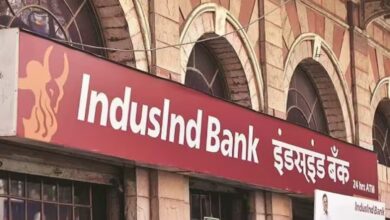Economy Red Alert: Indian Economy May Experience Its Worst Contraction in FY21 at 10.5%
Fitch Ratings on Tuesday cut Indian’s FY21 GDP (gross domestic product) forecast to a contraction of 10.5% from a 5% contraction estimated in June. This was due to limited fiscal support, fragilities in the financial system, and a continued rise in virus cases that hindered an accelerated normalization in the activity.
India Ratings (India arm of Fitch) is more pessimistic about the Indian economy. In a report released on Tuesday, India Ratings revised and slashed its forecast for India’s GDP for the FY21 by 11.8%, compared with the previous estimate of 5.3%. The latest estimates by India Ratings and Fitch are among the worst forecasts for the Indian economy for the current fiscal year, which can make it the worst contraction so far in Indian history. The previous lowest contraction rate of GDP was 5.2% in FY80.

In the latest Global Economic Outlook 2020, Fitch modest its revised estimation of global Gross Domestic Product (GDP) from 4.6% in June to 4.4% a contraction rate, and also revised the United States growth rate (0.6%) and China (2%). Fitch stated its global GDP estimates for the year 2020 are affected by the more severe contractions expected in India, the Eurozone, and the UK.

Fitch said that after the unprecedented severe COVID-19-related recession in March and April, economic activity recovered swifter than foreseen, but they assume the pace of expansion to moderate soon.
Rating agencies said that India’s GDP will bounce steadily in the September quarter when the economy reopens, but there are signs that the recovery has been uneven and sluggish. The PMI balance has rebounded, but this implies that activity levels are still well below pre-pandemic levels in the third quarter of the 2020(September quarter). It further added that depressed levels of imports, capital goods production, and two-wheeler sales are still in a doldrums state, indicating a weak recovery in domestic spending.
India’s gross domestic product plunged by 23.9% in the second quarter because of the COVID-19 pandemic, government-imposed one of the most stringent lockdowns, leading to supply disruptions, massive unemployment, and a sharp drop in domestic demand. The rating agency also affirmed that India performed the worst in the second quarter among the G20 countries.
Fitch said that in the short and medium-term, multiple challenges hindered India’s recovery. The new cases of the COVID-19 continue to increase, forcing union territories and some states to tighten restrictions again, although these local containment measures are usually not as stringent as they were from March to April. The continued spread of the coronavirus and the sporadic closures across the nation depress sentiments and have disrupted economic activity.
Rating agencies said that with limited financial support, severe autumn inactivities have also slashed the household and corporate incomes and balance sheets. It added: In the context of weak bank capital buffers, the imminent deterioration of asset quality in the financial sector will inhibit credit provision.
Fitch said the recent surge in inflation has put pressure on household income. Supply chain disruptions and increased excise duties have led to price hikes. However, we foresee inflation to moderate amid weak underlying demand, supply chain disruptions ease, and good monsoon.
Chief India economist at HSBC, Pranjul Bhandari, predicts that until December 2020, economic growth will remain negative, and then slightly turn to positive growth at the beginning of 2021(led largely due to the weak statistical basis). Bhandari believes: Although we predict that next year’s GDP will achieve positive growth of 7.2%, GDP is likely to return to pre-pandemic levels in early 2022.




